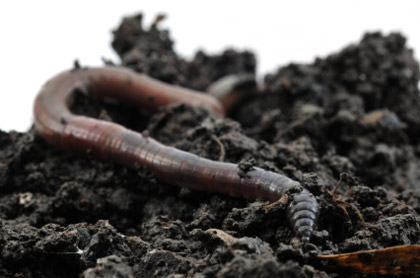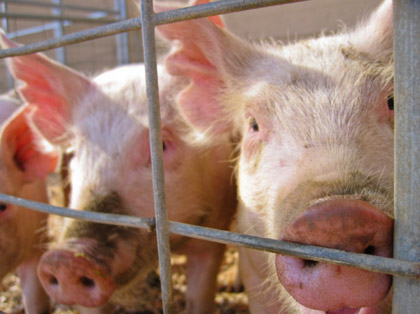The New Frontier: Restoring Natural Capital & Sustainability
Humanity stands at the edge of a new frontier. Earth is at a critical threshold and global society’s ability to master the sustainability challenge within the next decade will determine whether the world it leaves its children will be one worth living in. When U.S. President John F. Kennedy uttered his famous words about the “new frontier,” humanity was just beginning to develop tools to apply the systems thinking that had been crystallizing since the 1920s. In the 1960s and 1970s, advances in complexity theory and mathematics, coupled with dramatic advances in computing, allowed researchers and scientists to begin modeling and comprehending the predicament Earth’s inhabitants now find themselves in.
Several decades later, the models have been fact-checked with real-world data, which confirm that unless humanity changes its course and figures out sustainability, the global web of life, and the human way of life, will change dramatically. A linchpin of the current predicament is the collective underlying philosophy that shapes assumptions about how the world works. These operating views govern how people think and make decisions affecting their present and future. This article will trace the evolving path of this collective worldview, focusing on the latest developments in the emerging Systems View of Life. The latter holds the key to new operationally practical approaches for preserving and restoring Earth’s precious natural capital so its inhabitants can truly “satisfy their needs without diminishing the prospects of future generations.”
Global society is increasingly coming to terms with the sustainability challenge that lies before it. Climate change was probably the wake-up call for many. However, the underlying and intertwined degradation of earth’s ecosystems is an equally looming challenge since they comprise the base of natural capital providing life-support systems (ecosystem services) human society and industry depend on to function. The sustainability movement realizes the challenges and has made well-intentioned moves towards changing business as usual as evidenced by its proclamations and definitions, such as those by Lester Brown and the Brundtland Report.
However, while these definitions are inspiring, they are not operationally useful because they do not say how to actually go about being ecologically sustainable. The emerging discipline called “Systems View of Life” is helping to update the worldview of how Earth and its many subsystems and ecosystems function. It offers approaches and perspectives to help leaders make the shift to “operationalizing sustainability” – moving sustainability from “an inspiring but fuzzy concept” to a science-driven set of management approaches to bring about the required on-the-ground changes.
One simple, operational definition of sustainability is: Nature is our teacher. After all, Earth’s ecosystems have followed and co-evolved certain principles to sustain life from its very beginning. With a four billion-year track record of success, Nature is inherently sustainable, which is why human society and industry need to follow these same principles. Fritjof Capra, PhD and Systems View of Life thought leader, offers this updated definition of sustainability:

© iStockphoto.com/AlasdairJames
“A sustainable human community is designed in such a manner that its ways of life, businesses, economy, physical structures and technologies respect, honor and cooperate with Nature’s inherent ability to sustain life.”
This next-generation, operationally practical approach to sustainability is underpinned by two foundational and intellectual disciplines: ecological literacy and Systems View of Life. Ecological literacy is the knowledge of the principles of organization with respect to the Earth’s ecosystems and their evolution throughout billions of years to sustain the web of life – also known as the principles of ecology. At a core level, these principles include:
- One species’ waste is another species’ food;
- Matter cycles continually through the web of life (a living system is a dissipative system);
- Solar energy drives ecological cycles;
- Diversity assures resilience; and
- Life did not take over the planet by combat but by networking.
To adopt an operationally effective approach to sustainability, it is important to implement management approaches that acknowledge these ecological principles. It is also important to understand the higher-level organizational principles embodied in Systems View of Life and how it differs from the old paradigm reductionist worldview, which laid the foundation for the unsustainable industrial, social and economic systems at the root of the current ecological crisis.
Understanding how Nature sustains life involves a new conception of how life operates, which has come together within the past 30 years. It also involves a new kind of “systemic” thinking – thinking in terms of relationships, patterns and context. Systems View of Life is the theoretical underpinning of ecological literacy. Systems thinking as a discipline is not new. Such systems concepts began their emergence in the 1920s and are being increasingly applied in many organizations and contexts, including management science, business and economics. However, Systems View of Life differs in one important aspect: Most systems research is done on mechanical/non-living systems whereas Systems View of Life focuses on living systems.
This new scientific understanding of life includes the following principles:
- The material world is ultimately a network of inseparable patterns of relationship;
- The planet as a whole is a living, self-regulating system composed of nested subsystems that function and interact at multiple levels;
- Each system and subsystem – from the planet as a whole to individual ecosystems to individual organisms and even individual cells – are living, cognitive systems; and
- Evolution is a cooperative dance in which creativity and the constant emergence of novelty are driving forces.
The old worldview – consisting of mechanistic-reductionist approaches by Newton, Descartes, Galileo and their peers – was based on quantities vs. qualities and individual parts vs. the whole, thus focusing on individual objects vs. relationships between objects, measuring vs. mapping and structure as opposed to process. However, it is increasingly becoming obvious that in a complex, systems-driven world the whole is more than the sum of its parts, and everything is interconnected and interdependent. Systems View of Life is a new science of qualities, not quantities, that has developed thanks to interdisciplinary conversations between biologists, ecologists and psychologists. This new science focuses on qualities of complexity, networks and patterns of organization, and it acknowledges that a living system – organism, ecosystem, social or economic – is an integrated whole whose properties cannot be reduced to those of smaller parts.
Living systems consist of individual organisms and also communities of organisms, including social systems like family, village or business organization, along with natural living ecosystems. All living systems share a set of common properties and principles of organization, and new insights can be driven by shifting back and forth between levels and scales of systems, thus applying insights learned at one level/system to another level or component of the system.

© iStockphoto.com/hadynyah
These insights can be applied to integrate academic disciplines and to discover similarities between different phenomena across the broad range of living systems. A challenge solved within one type of system can yield perspectives on solving challenges in others.
A key characteristic of sustainable living systems is they follow qualitative rather than quantitative growth. In other words, growth in Nature is not linear and unlimited. While certain parts of the system grow, other parts decline and release components that are recycled to feed the rest of the system. Qualitative growth, therefore, is a balanced, multi-faceted growth well-known to biologists and ecologists. When contrasted with quantitative, unlimited growth, which underlies the current global macro-economic system, one begins to understand that quantitative, unlimited growth is unsustainable and does not have a corresponding analogue in Nature. Qualitative growth, however, can be sustainable if it involves a dynamic balance between growth, decline and recycling. It also needs to include the inner growth of learning and maturing since living systems are cognitive and learn from interactions with the surrounding environment.
Other key characteristics of a living system are its ability to self-organize, self-generate and self-regulate. A living system – organisms and networks – continually creates, or recreates, itself by transforming or replacing its components, thus maintaining a co-existence of stability and change. The system’s pattern of organization stays the same; what continually changes is the physical structure/components that make up the system. This occurs in two primary ways:
- Self-renewal of structures – rebuilding, repairing and constant cycling of energy through structures – and
- Creation of new structures – building new structures as needed to adapt to changing stimuli/disturbances in the external environment.
An important characteristic of a living system’s ability to self-organize is its ability to respond to an outside disturbance in its own autonomous way. One can never direct a living system; one can only disturb it. In order to manage or to influence a living system, one must provide a disturbance or stimulus that will cause it to self-react in the desired way. This principle has implications in both ecological and sustainability management as well as organizational behavior and social science. When living organisms respond to disturbances in the external environment, internal structural changes occur as well. This is known as the process of development. Throughout time, and at every stage of development, the structure of a living organism is a record of previous structural changes. All living beings/systems have a history that provides clues to past disturbances as well as how the organisms evolved and developed to respond to those disturbances.
Using systems principles to approach sustainability problems may require a shift from conventional thinking.

© iStockphoto.com/Olga_Danylenko
However, this shift offers a new perspective that can yield new solutions not visible from the old worldview. One key shift is to look at a situation or management challenge in terms of patterns of relationships. Rather than focusing on the behavior of an individual element of the system, broaden the perspective and explore how relationships between the parts of a system influence each other’s behavior. In particular, look for patterns of relationship. When examining sustainability challenges from a systems lens, consider relationships between the following often overlooked aspects:
- Timing and synchronization between interlocking systems: Examine the rhythms and oscillations at play within various subsystems. For example, water withdrawals need to be balanced against the needs of surrounding ecosystems, which fluctuate according to time of year. Consider migration patterns of species of concern that depend on certain water levels in certain places at certain times of year.
- Energy and resource flows not just within an individual system but across the boundaries between systems: For example, manage a local site within the broader perspective of the surrounding ecosystems. Consider flows of energy and resources to include sound, nutrients, sediment or foreign/invasive species.
- Diversity and its impact on resilience: In general, the more diversity in a system, the greater its ability to self-regulate and maintain system integrity in the face of external stress. For example, genetic diversity within an individual population increases the likelihood that organisms will possess traits to help withstand a disturbance. And, diversity of populations occupying roles within an ecosystem increases the likelihood that those functions will continue in the face of disturbance.
One opportunity in systems research and its application to sustainability is the area of boundaries. Societies are relatively good at managing individual systems but opportunities exist to better manage boundaries between different, interacting systems. As research, application and tool development continues, systems-based sustainability approaches will increasingly examine relationships, patterns and feedback loops between systems at different scales and domains.
The ecosystem services framework is an emerging systems-based management approach gaining prominence in the sustainability community. It begins to address the boundaries challenge by examining how ecosystems (i.e., the base of natural capital) generate flows of goods and services used by, or affecting the functioning of, human systems – economic, social, cultural or cognitive. Framing ecosystems as a base of natural capital, which provides inputs (ecosystem services) into various human domains (economic, social), bridges the boundaries between ecological systems and human systems. By highlighting how human endeavors depend on Nature’s flow of services, the ecosystem services framework helps to integrate multiple system domains. This erases the long-standing, yet artificial “humans are separate from Nature” divide given thrust by the reductionist Cartesian “Nature as machine” philosophical roadmap laid down during the Enlightenment.
One of the challenges in shifting the economic and industrial model toward a more sustainable direction has been the emphasis on quantitative rather than qualitative growth. The conventional, reductionist, quantitative growth model uses a narrowly defined metric to measure economic growth. At a macro-level, the metric is Gross Domestic Product (total monetary value of all economic activities) while at a micro-level the focus is solely on the corporate bottom line. Both of these narrow economic metrics externalize the financial cost associated with ecological impacts. In other words, the ecological costs are considered to be outside the boundaries of the economic system and are conveniently ignored until the resulting degradation of natural capital inconveniently impacts economic returns.
A macro-level example of how externalized/ignored costs of ecosystem degradation later resulted in tangible impacts is how wetlands degradation has contributed to large-scale economic losses, such as the Mississippi River floods of 1993 and 2008, and the Hurricane Katrina disaster. At a micro-level, increasing case studies point to how ignoring ecological issues has adversely and significantly impacted corporate bottom-line profits.
Early efforts are underway to include natural capital, and the flow of ecosystem services it generates, as an asset class within the conventional financial accounting world. This is an important step in integrating ecological systems with human systems as the economic system is driven by financial metrics. By including natural capital as an asset on the balance sheet, the financial world can begin to acknowledge ecosystem health as interconnected to economic health. As economic and ecological factors become paired and incorporated into organizational metrics and governance models, new thinking will change management efforts as typically humans only “manage what they measure.”

© iStockphoto.com/meltonmedia
The ecosystem services and natural capital perspective can also be used to highlight interconnections between ecological and human systems at a micro level, thus illuminating real world issues within a particular locality or community. For example, the industrial, concentrated animal feeding operations (CAFO) issue is gaining increasing prominence with unsustainably managed CAFO operations frequently inflicting significant costs to local communities. However, such costs were often difficult to articulate in a way that could inform local on-the-ground management decisions.
A recently completed study applied an ecosystem services full-cost accounting perspective to a proposed facility that has been high-profile in the United States’ CAFO debate. Prior to the ecosystem services analysis, the primary conversation centered on the facility’s potential economic revenue benefits to the community. However, when considering the full range of ecological risks posed by the facility, the focus changed. By extending ecological risks into the human social and economic domain using the discipline of ecological economics, it was estimated that this one CAFO facility could incur a one-time cost of USD $2.3 million to the local community with potential annual net community costs of $5 million/year.
Cost estimates are driven by ecological impacts, such as damage to freshwater supplies, local air quality, loss of property value and associated tax revenue, and biodiversity impacts on regional tourism. Money is not the only value metric and using it risks framing ecological issues in economic terms, thus applying a reductionist filter excluding additional values not translatable into the language of finance. That said, it is still an important systems-driven step forward in advancing the conversation toward approaches that integrate ecological concerns within the existing economic decision-making framework.
As humanity peers over the edge of the new frontier, it is better equipped to come to terms with the sustainability challenges before it. As knowledge increases regarding how life works on Spaceship Earth, people will be able to refine their knowledge of the inner and outer workings of the myriad of patterns, structures and relationships constantly driving the planet’s ecological, social, cultural and economic systems. As Systems View of Life continues to evolve, sustainability leaders can expand their management toolkits and devise new and practical applications to bring sustainability to life where it matters most – on-the-ground within communities, businesses, social networks and Earth’s ecosystems.
To accelerate such a shift, leaders will be required to focus their approaches towards methods that align with and honor Nature’s inherent ability to sustain itself. This will allow sustainable human communities to be designed in such a manner that its ways of life, businesses, economy, physical structures and technologies respect, honor and cooperate with Nature’s inherent ability to sustain life. To do otherwise is not an option, for in the words of R. Buckminster Fuller, “The opposite of Nature is impossible.




























